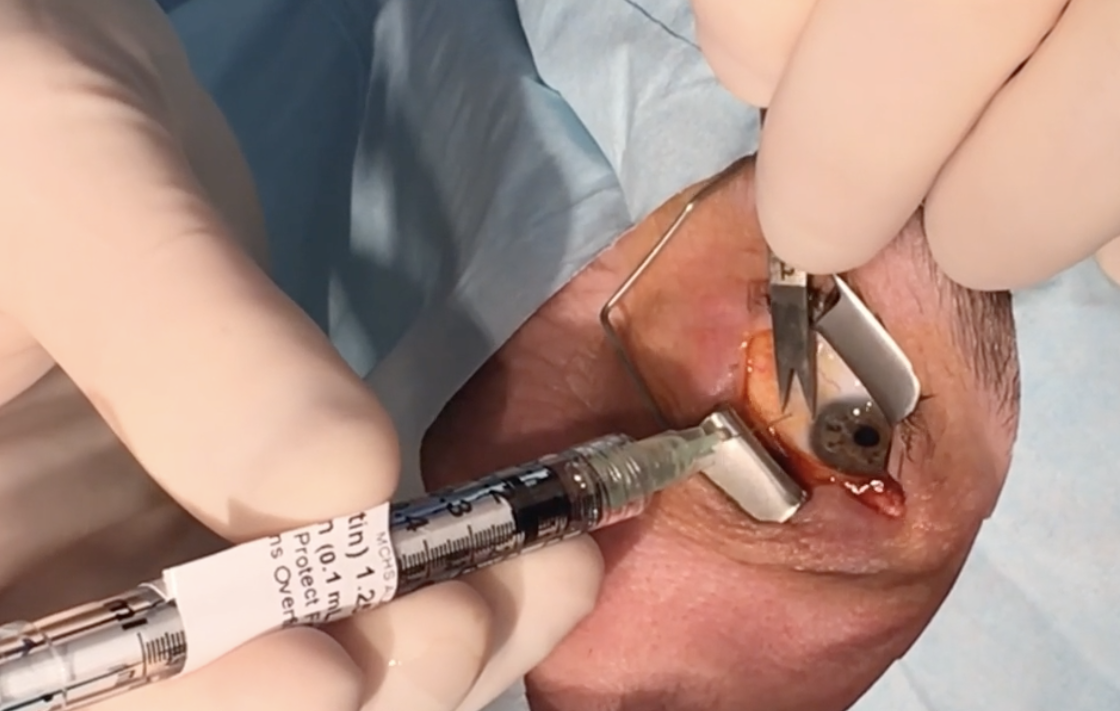 |
| Access to care may be a factor in regional variation in intravitreal injections. Photo: Leo Skorin, OD. Click image to enlarge. |
The factors influencing differences in adoption of anti-VEGF injections are still poorly characterized, and trends in national anti-VEGF use and associated costs have only been documented until 2015 in the population insured by Medicare. A recent study characterized trends in use of and expenditure for the intravitreal injection of anti-VEGF agents aflibercept, ranibizumab and bevacizumab among the population enrolled from 2014 to 2019. States with a higher density of injecting physicians were associated with a higher anti-VEGF injection rate, as well as higher aflibercept and bevacizumab agent-specific injection rates.
In this period, 17,588,995 intravitreal injection claims were filed by 4,218 US ophthalmologists. Medicare costs for anti-VEGF injections increased from $2.51 billion in 2014 to $4.02 billion in 2019.
Increased state-level ophthalmologist availability and incremental increases in average reimbursement amounts were found to be significantly associated with a 6.8-fold variation in 2019 overall anti-VEGF injection rates across states. The researchers found a 7.3-fold difference in aflibercept use, a 231.9-fold difference in ranibizumab injection rate and a 37.9-fold difference in bevacizumab injection rates across all 50 United States and the District of Columbia.
“While the determinants of regional variation are multifactorial, we found access to injecting ophthalmologists to be one factor significantly associated with this variation,” the authors wrote in their paper. “States with a higher density of injecting physicians were associated with a higher anti-VEGF injection rate, as well as higher aflibercept and bevacizumab agent-specific injection rates.”
Population-adjusted aflibercept injection rate increased 138% from 2014 to 2019, while ranibizumab injection rate marginally increased and bevacizumab injection rate slightly decreased. “Though aflibercept was initially approved for wet AMD, expanding indications (e.g., proliferative diabetic retinopathy, diabetic macular edema) in the management of ophthalmic disease may partially explain the nationwide increase in injection rate,” the authors noted.
“Additionally, the ability to extend patients for a longer period between injections may also explain an increase in aflibercept injection rates.”
“Future studies are warranted to better elucidate whether the observed gaps in state-level injection rates result from physician-specific characteristics, regional characteristics or payments provided by the pharmaceutical industry (e.g., consultation, education, travel, food and beverage),” they added. “This will help reveal the most appropriate policies which may help decrease observed disparities in injection rates unaccounted for by the distribution of eye disease burden.”
Desai S, Sekimetsu S, Rossin EJ, Zebardast N. Trends in anti-vascular endothelial growth factor original Medicare part B claims in the United States, 2014-2019. Ophthalmic Epidemiol. February 5, 2024. [Epub ahead of print]. |

